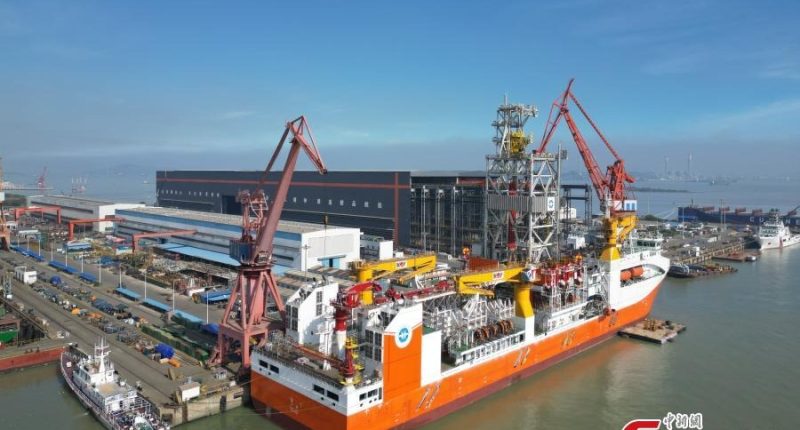CHINA has unveiled the world’s most advanced ocean research ship capable of drilling at depths of more than 36,000ft in an attempt to harvest a new energy source.
The ambitious vessel can travel a distance of 15,000 nautical miles and can continuously operate for up to 120 days while engaging in the country’s deep-sea oil and gas exploration.
The drillship is set to start its first trial voyage on Friday from a port in south China‘s Guangzhou City.
Called Mengxiang which is Chinese for “dream”, the vessel is being hailed as the most sophisticated vessel for sub-seabed harvesting.
The Chinese state media has called the development of the ship “a key step for the country’s ocean exploration capabilities”.
Mengxiang is equipped to reach and drill at a depth of 36,089ft – surpassing Mariana Trench, the deepest point in the ocean.
more on china
The vessel boasts a sprawling laboratory covering 300 square meters, featuring nine sections dedicated to various scientific disciplines such as marine science, microorganisms, and rock magnetic field studies.
The key technologies adopted in the development of the vessel include the Digital Twin system that will allow scientific experiments and the ambitious drilling operations to go on simultaneously.
Mengxiang is set to explore and extract a new source of global energy – “flammable ice”.
WHAT IS FLAMABLE ICE?
Methane hydrate, or flammable ice, is an ice-like compound of water molecules with methane gas trapped inside.
Most read in Science
These hydrates are found in deep-sea sediments and permafrost regions – and may become a great source of energy in the future.
If extracted properly from the ocean beds, the vast reserves of methane hydrate deposits could guarantee at least 1000 years of global energy consumption.
China is one of the leading countries trying to mine it – and estimates vast reserves of approximately 80 billion tonnes of potentially flammable ice in its water.
The Asian giant has increasingly flexed its maritime might in recent years, particularly in the resource-rich South China Sea where it is engaged in territorial disputes with neighbouring countries.
China claims almost the entire South China Sea, which produces more than $3 trillion of annual ship-borne commerce, including parts claimed by the Philippines, Vietnam, Indonesia, Malaysia, and Brunei.
The Mengxiang sea trials come after Philippine President Ferdinand Marcos Jr said over the weekend that his country could start new energy exploration projects in the disputed waters.
However, no details about the location of the trials have yet been released.













